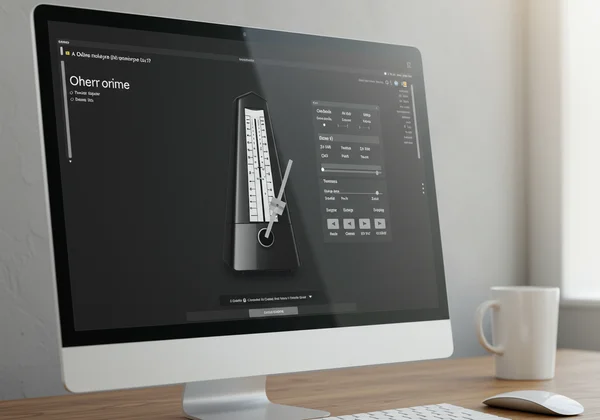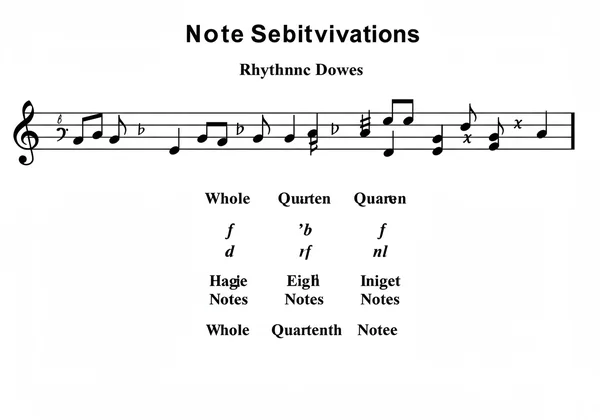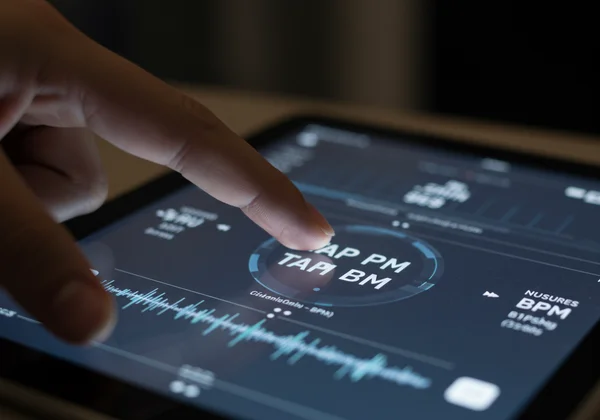Free Online Metronome: Your Ultimate Rhythm Practice Guide
Welcome to the ultimate metronome practice guide, designed to transform your sense of time and elevate your musical skills. Whether you're picking up an instrument for the first time or you're a seasoned professional, learning how to practice with a metronome is the single most effective step toward rhythmic precision. But how can a metronome improve my playing? It acts as your unwavering, honest coach, building a solid foundation of timing that allows your creativity to flourish.
This guide will walk you through everything, from basic concepts to advanced techniques. We'll show you how to turn that simple click into your most powerful practice partner. Experience the convenience of a metronome online directly from your browser with a versatile and reliable tool like our free online metronome.
Metronome for Beginners: The Foundational Steps
Starting with a metronome can feel awkward, but mastering the basics is crucial for long-term success. This section is your starting point for building an unshakeable internal clock. Think of it as learning to walk before you can run; these foundational skills are non-negotiable for every musician.
What is a Metronome & Why is it Indispensable?
A metronome is a device that produces a steady, consistent click at a specific tempo. Its purpose is simple but profound: to provide an objective reference for time. Musicians use it to maintain a steady beat, practice difficult passages with accuracy, and develop a precise internal sense of rhythm. It's indispensable because it removes guesswork, revealing any tendencies to rush or drag the tempo.
Without a metronome, it's easy to develop bad timing habits that are difficult to correct later. By making it a regular part of your practice routine, you ensure that every note you play is rhythmically accurate, which is the bedrock of all great musical performances.

Understanding BPM and Time Signatures
Before you press start, you need to understand two key concepts: BPM and time signatures. BPM stands for "Beats Per Minute," and it simply tells you how fast the music is. A setting of 60 BPM means there is one beat every second, while 120 BPM means two beats per second. This is the fundamental speed setting for any metronome.
A time signature, like the common 4/4, tells you how many beats are in each measure (the top number) and what kind of note gets one beat (the bottom number). In 4/4 time, there are four beats per measure, and the quarter note gets the beat. Our time signature metronome allows you to set this, often with an accent on the first beat to help you feel the pulse.
Getting Started with Your Metronome Online
Ready to begin? Head over to our free online metronome. You’ll see a clean, intuitive interface with no downloads required. First, set the BPM using the slider or by typing a number. A great starting point for beginners is a slow tempo, like 60 or 70 BPM. Next, select a time signature, such as 4/4. Click "Start" and just listen. Clap along with the click until you feel perfectly in sync. Once you're comfortable, pick up your instrument and play a single, simple note on every beat.

Mastering Effective Metronome Practice Techniques
Once you're comfortable playing on the beat, it's time to learn about using a metronome effectively. This is where the real progress happens. These techniques will help you tackle complex rhythms, increase your speed cleanly, and add a professional level of polish to your playing.
The Power of Slow Practice: Gradually Increasing Tempo
One of the biggest mistakes musicians make is practicing too fast, too soon. The metronome is your best friend for mastering the art of slow practice. Start by finding the tempo where you can play a passage perfectly, even if it feels incredibly slow. This allows your brain and muscles to build accurate memory without reinforcing mistakes.
Once you can play the passage flawlessly multiple times in a row, increase the tempo by a small amount—just 2-4 BPM. Repeat the process, gradually building speed. This methodical approach ensures your technique remains clean and controlled at any tempo. This is a core part of any good practice routine.
Unleashing Subdivisions: Adding Groove and Precision
Playing only on the main beat is just the beginning. To develop a great feel and tackle more complex music, you must master subdivisions—the notes between the clicks. Our rhythm practice tool allows you to hear eighth notes (two notes per beat), sixteenth notes (four notes per beat), and triplets (three notes per beat).
Start by setting the metronome to a slow tempo and choosing the eighth-note subdivision. Practice playing two even notes for every click. This will sharpen your timing and is essential for genres from rock to classical. As you advance, work on sixteenth notes and triplets to give your playing more groove and rhythmic diversity.

Beyond the Click: Accents, Dynamics, and Silence
A great musician does more than just play in time; they play with feeling and musicality. Use the metronome to practice dynamics by playing loudly on beat one and softly on the others. Use the accent feature on an online metronome to help guide you. This exercise develops control and adds expression to your playing.
Furthermore, you can use the metronome to practice rests and entrances. Set the click and count a full measure of silence before you start playing. This trains you to feel the pulse even when you're not playing and to come in at precisely the right moment, a critical skill for playing with other musicians.
Advanced Metronome Strategies for Serious Musicians
For experienced players, a metronome online can be used for far more than just keeping time. These advanced strategies will challenge your rhythmic perception, unlock new creative possibilities, and help you develop an unshakable internal clock.
Practicing Polyrhythms: Crafting Complex Rhythmic Interplays
Polyrhythms involve playing two different rhythmic patterns simultaneously, such as three notes over two beats. Set your metronome to a slow tempo and tap a simple quarter-note pulse with your foot. Then, on your instrument, try to play an even three-note pattern (a triplet) over every two beats. This is a challenging but rewarding exercise that dramatically improves your rhythmic independence.
Developing Your Swing Feel: Jazz and Genre-Specific Rhythms
Not all music has straight, even subdivisions. Jazz, blues, and shuffle rhythms rely on a "swing" feel, where eighth notes are played with a long-short feel instead of evenly. You can practice this by setting your metronome to a triplet subdivision. Play a note on the first and third part of each triplet, leaving the middle one silent. This will instantly give you an authentic swing feel.
The 'Internal Metronome' Challenge: Practicing with Silent Measures
The ultimate goal is to internalize the beat so you don't need a metronome. A powerful exercise is to set the metronome to play for one measure and then be silent for the next. During the silent measure, keep counting and playing in your head. When the click returns, see if you are still perfectly in time. Gradually increase the number of silent measures to truly test your internal rhythm.
Maximizing Your Online Metronome: Features to Elevate Your Practice
Our tool is more than just a simple clicker. It’s a full-featured BPM counter and practice station designed to support your growth as a musician. We’ve built in professional features that are intuitive for beginners but powerful enough for pros.
Tap Tempo: Instantly Finding Any Song's BPM
Ever heard a song and wanted to know its tempo? Our Tap Tempo feature makes it easy. Simply listen to the song and tap along to the beat on the "Tap BPM" button. After a few taps, our algorithm will calculate the precise BPM, allowing you to set the metronome and practice along with your favorite tracks. Try the tap tempo now.

The Practice Timer & Customization Options
Disciplined practice requires focus. Our built-in practice timer helps you stay on task and track your sessions. Set it for 15, 30, or 60 minutes to structure your practice time effectively. Additionally, you can customize your experience by choosing from different click sounds or switching between light and dark mode for focused, distraction-free practice.
Ready to Transform Your Rhythm?
By consistently incorporating these techniques into your practice, you will build a rock-solid rhythmic foundation, improve your technical accuracy, and unlock a new level of musical expression. The journey to rhythmic mastery is a marathon, not a sprint. Be patient with yourself, start slow, and celebrate small victories. The tools and knowledge are right here at your fingertips, so now it’s time to put them into action. Head over to our online metronome tool to set your first tempo and take the next step toward becoming the musician you want to be.
Frequently Asked Questions About Metronome Practice
What is a good tempo for music practice?
A good tempo for practice is whatever speed allows you to play a piece perfectly without mistakes. For many beginners, this is a slow tempo between 60-80 BPM. The golden rule is to start slow enough to ensure accuracy and only increase the speed once you have achieved mastery at the current tempo.
How can a metronome improve my playing?
A metronome improves your playing by developing a precise sense of timing and rhythm. It helps you play evenly, control your speed, and understand subdivisions. This solid rhythmic foundation makes you a more reliable and confident musician, especially when playing with others.
How do I find the BPM of a song using an online metronome?
The easiest way is to use a "Tap Tempo" feature. Go to a tool like our BPM counter, listen to the song, and tap the button in time with the music's beat. The tool will automatically calculate and display the song's BPM for you.
What does 4/4 time mean in music, simply explained?
In 4/4 time, also known as "common time," the top '4' means there are four beats in every measure. The bottom '4' indicates that the quarter note gets one beat. It creates a straightforward, steady pulse that you can count as "1, 2, 3, 4, 1, 2, 3, 4," and it's the most common time signature in popular music.